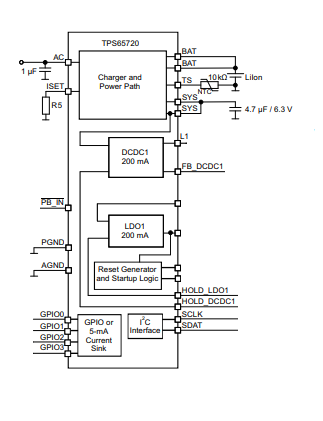Hello,
Were are using the TPS65721 for the first time in our project and we need to charge a LIPO battery with it. For now, we are not interested by the DC/DC, LDO or GPIOs functions.
We have developed a small PCB to test the charger and we have set the TPS65721 like this :
So we are just want to test the charger bloc :
- 5V on AC input
- LIPO battery on BAT pin
- 1K on ISET
- 10K on TS
The chip start and we can communicate with it via I2C, read and write into registers. But the charger won't start when we put a Lipo on BAT pins.
When have checked the 1 register and saw that the charger is enable and the power source is good.
The temperature is also good, so the charger is not in temperature protection mode.
But charger won't charge the battery.
If someone have an idea about what's going on... Thanks :)


